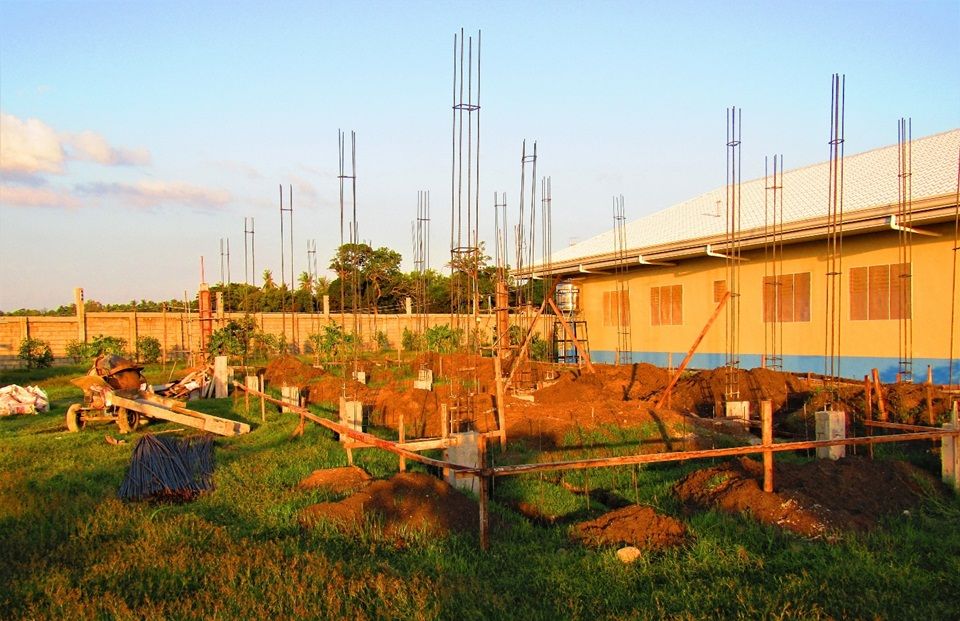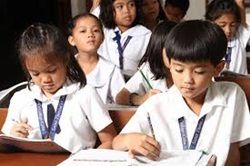Opening / Construction Updates
We are making progress on our second house in collaboration with Save Asian Souls; a safe house for girls vulnerable to human trafficking as part of our Human Trafficking Prevention Program. We will soon be laying block, made on site, for the foundation walls.

We are also getting closer to completion of what will eventually be the central laundry house. For the mean time we will use this building as our office space and free up more space in the first children’s home as we will soon begin operations of our Orphan Care Program in this home.

Work on the permanent electrical power supply will start soon after many hours of work on gaining “right of way” for poles, negotiating contracts, and purchasing materials. Thankfully this major infrastructure project is a one-time task to supply permanent power to our facility. We are currently preparing the inside of the facility for this 3 phase power supply.

Van Campaign
 We are making progress in our campaign to raise funds for the purchase of a van/child friendly vehicle to transport our orphanage children when the need arises such as: travel to school, doctor/dentist visits, field trips, or emergencies. We have set a goal of $12,000 — his will purchase a quality second hand vehicle for 10+ passengers, make any minor repairs needed, registration/smoke test, and insurance coverage.
We are making progress in our campaign to raise funds for the purchase of a van/child friendly vehicle to transport our orphanage children when the need arises such as: travel to school, doctor/dentist visits, field trips, or emergencies. We have set a goal of $12,000 — his will purchase a quality second hand vehicle for 10+ passengers, make any minor repairs needed, registration/smoke test, and insurance coverage.
We need to purchase this vehicle upon starting operations and accepting children into our care.
In the May 2019 issue of our newsletter, we published an initial estimate of $5,000 for the orphanage van purchase, setting that amount as the goal for this campaign.
However, after more thorough research and investigation about the quality of vehicles that are currently available on the market, we have decided to increase our goal to $12,000.
We believe that this amount will be sufficient to provide a vehicle with better longevity for our mission, potentially saving us maintenance and replacement expenses in the years to come.
Thank you for supporting this campaign to provide adequate transportation for the children at our orphan care facility.
Checks should be made to Philippine Mission, Inc.
Please send to:
Aaron Schwartz, CPA
c/o Philippine Mission, Inc.
1108 Center Road
Rogersville, MO 65742
Note: *Be sure to make a note on your check “Orphanage Van Purchase”so we can insure the funds are directed towards this campaign.
Do You Know How It Feels?
The day begins at 5 am for a Filipino child living in the rural mountains. They must leave early for school because they still have to climb thru the mountains to reach their school.
The children and their schoolmates walk over streams and through the woods to get to school, which is located on top of the mountain. While walking through the woods, they share laughter so they do not have a tiring walk to school.
 Every day, they cross mountains by foot. They are uncertain about what they’ll meet along the way — like snakes, which they often see, especially during rainy seasons. “We are more afraid of destroying our slippers than seeing snakes,” one of the children shares. For these children and their parents, buying a pair of slippers is expensive.
Every day, they cross mountains by foot. They are uncertain about what they’ll meet along the way — like snakes, which they often see, especially during rainy seasons. “We are more afraid of destroying our slippers than seeing snakes,” one of the children shares. For these children and their parents, buying a pair of slippers is expensive.
When asked about the most challenging part of going to school, one child says, “When heavy rains come, we can’t go home. We need to wait for the floodwaters to subside, and the mountains are very slippery.”
On the way to school, most of the children stop at the stream for a quick shower. They leave their change of clothes hanging to dry while they study, then pick up their dried clothes on their way back home. All of the children stop at the spring for a drink and to refill the empty containers they bring every day, since they don’t have access to clean water in school.
The school has two classrooms for almost 100 children: Preschoolers and first, second, and third grades share one classroom, while fourth, fifth, and sixth grades share the other. The children sit at old wooden desks — each shared by three students in the same grade, and each row a different grade level.
The school doesn’t have a canteen where they can eat their lunch. They eat their lunch under a shed. The shed is dilapidated, made of old wood with a rusty galvanized iron roof. Parents have put rocks on top of the shed, afraid that strong winds will blow the roof away.
 Along with schoolmates, they eat their packed lunch from home together. They often also share it with others who don’t have food to eat aside from rice.
Along with schoolmates, they eat their packed lunch from home together. They often also share it with others who don’t have food to eat aside from rice.
Most of children’s lunches are wrapped in banana leaves. When asked what is for lunch they reply “As always, rice and dried fish.”
Many parents face difficulty sending their children to school. They may work as a tenant farmer or do construction in a neighboring town.
Many parents earn less than 1,000 Philippine pesos (US$23) for the entire month of hard work.
The only school uniform some children have may be many years old and inherited from another child.
Despite the challenges one young boy says….. “Someday when I finish my studies, I promise to share what I have with my sister, my family, and others, because I know how it feels to have nothing.”
Do you know how it feels?
Note: A core program of the Philippine Mission is the planned establishment of a primary school within the facility to provide basic and Bible-based instructions to the children of the orphanage as well as to children from depressed neighboring communities.

Ronald and Georgia Brown
Casa Esperanza of Angels
PHILIPPINE MISSION INC.
Tanjay City, Philippines
July 2019 Newsletter
Volume 7 Issue 54
